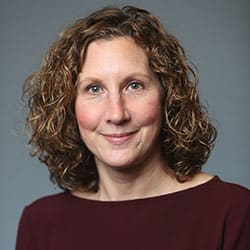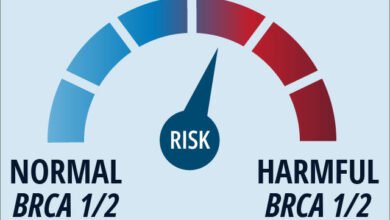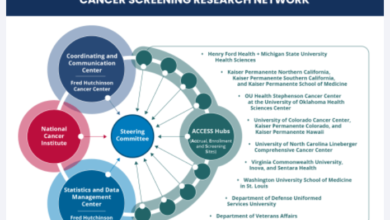FDA-AACR Workshop Will Discuss Dosage Optimization

Traditionally, dosages for oncology drugs have been selected based on the maximum tolerated dose (MTD)—that is, the highest dose without dose-limiting toxicities based on a relatively short observation period. However, most regulators, researchers, health care providers, patients, advocates, and others believe it’s time to move past MTD. In 2021, the U.S. Food and Drug Administration (FDA) launched a new initiative to rework the dosage optimization paradigm. An optimized dosage for an oncology drug is defined as one that maximizes efficacy while minimizing toxicity.
Why is it important to reframe how we select dosages for oncology drugs? How can we modify clinical trial design and analyses to find dosages that are effective and tolerable? What are the challenges to implementing these changes?
To address these questions, the American Association for Cancer Research (AACR) and the FDA will host a joint workshop, the FDA-AACR Public Workshop: Optimizing Dosages for Oncology Drug Products, February 15-16, 2024 in Washington, D.C., and virtually.
Registration is free and open to the public.
We spoke with two of the workshop’s cochairs—AACR President-Elect Patricia M. LoRusso, DO, PhD (hc), FAACR, from Yale Cancer Center, and Stacy Shord, PharmD, from the FDA—who shared their thoughts on the current state of dosage optimization and how the workshop aims to move the field forward.
Why is dosage optimization important? What are the limitations to current methods of dosage optimization for oncology drugs?
LoRusso: It is important to identify the optimal dosage for a drug because we want to ensure that we are giving patients enough drug to maximize therapeutic benefit, while making sure to not give so much drug that it leads to unacceptable toxicities or toxicities that would warrant significant interruptions in the treatment regimen.
In the past, we have focused on finding the MTD, but moving forward, we need to reconsider this approach. Dosage optimization should no longer be focused on finding the highest dose that we can give the patient. While, in some cases, the MTD might still be the optimal dose, it won’t be in other cases; the ideal dose may instead be the one where we start seeing maximum biologic effect on the tumor, and giving a higher dose of the drug may not have any further impact on the biologic effect, nor an improvement in efficacy.
Shord: Recent advances in drug discovery have greatly improved patient survival and turned what used to be acutely fatal diseases into chronic ones for many. This means that patients may be taking these drugs for extended periods of time, resulting in long-term low-grade toxicities that need to be considered for dosage evaluation. But dose-finding studies have typically been designed to identify a dosage by evaluating toxicity within a very short period, usually within a month of starting treatment in a limited number of patients.
Many low-grade toxicities have a substantial impact on patients’ daily lives and reduce their ability to continue taking a drug they are benefitting from. To help patients in the long term, it is important to rethink how we find dosages that best balance the efficacy of a drug with its tolerability.
To accomplish this, we need to rethink how we are designing and conducting trials and analyzing and interpreting data—this might mean looking at multiple endpoints, increasing the number of patients receiving the drug in early-phase trials, evaluating multiple active dosages, and evaluating patients over a longer period of time.
What is the main objective of the workshop?

Shord: The primary purpose of this workshop is to engage in scientific discussion about dosage optimization and to communicate the FDA’s goals. We certainly don’t want to impede or prolong drug development. We want to make improvements while ensuring that beneficial drugs get to the patients who need them, especially those with unmet medical needs.
To this end, the workshop will examine quantitative methods that can help with dosage optimization, such as the wealth of tools for modeling pharmacokinetics, pharmacodynamics, or dose response. We will discuss how using these resources or approaches upfront could inform dosing at all stages of drug development and testing, including nonclinical, early clinical, and late clinical testing. The workshop will also feature discussions about how we could modify statistical analyses and clinical trial designs to find optimized dosages.
Ultimately, the goal of the workshop is to have a collaborative, meaningful conversation about how to move this paradigm forward in a realistic way that will have a positive impact on patients.
What topics will be covered during the workshop?
LoRusso: The workshop will have three major sessions, each broken into two parts. The first session will be about dose escalation for first-in-human trials. Part A of this session will discuss how to use nonclinical data and different models to select the test doses for drugs that have never been given to humans. Part B, which I will be moderating, will be about ending the reliance on short-term safety data and will examine how to select the best clinical trial design for a first-in-human drug based on the drug class and its anticipated short- and long-term side effects.
The second session will be about selecting dosages for additional exploration based on nonclinical data from models and early clinical trial data. Part A will address how we can bring together all of the nonclinical and early clinical data to select the dosages to explore in subsequent clinical testing (i.e., the recommended phase II dose). Part B will examine different clinical trial designs that could help us identify and advance the appropriate recommended phase II dose.
The final session will be about selecting dosages for registration trials, which are the trials that will be reviewed by the FDA for drug approval. Part A will focus on how we consider the totality of efficacy, safety, preclinical, and patient-reported data to help us design these registration trials. Part B will examine how we can make the transition from early phase trials to later phase/registration trials more seamless.
How can we implement new strategies for dose optimization?
Shord: I think if we can let go of some of our old ways and embrace a new way of thinking, we could answer some of the important questions up front during earlier stages of clinical testing, which would then prevent a drug coming off the market. By front loading the process, we can increase our chances of finding the right dose that improves patient outcomes with tolerable side effects.
In recent years, we have seen that several drugs that received accelerated approval were ultimately pulled off the market because of potential detrimental effects on overall survival. It is possible that these drugs could have benefitted patients, but we just didn’t have the right dosage.
Of course, there need to be special considerations for certain cases—pediatric cancers and rare cancers, for example—where enrolling large numbers of patients into a trial may not be feasible. We shouldn’t use the same approach for all populations.
Another challenge we need to overcome is our tendency to work in silos. To make progress, we need input from healthcare providers, clinical pharmacologists, statisticians, patients, and others. We need to get all stakeholders in the same room to figure out the best way forward. This is where workshops like this one could really help us.
What are some considerations for optimizing dosages for drugs intended to treat pediatric or rare cancers?
LoRusso: Pediatric and adult patients may metabolize drugs differently, have different tumor types with distinct tumor biology, and have different baseline organ health. All of these factors influence dosage optimization.
For rare cancers, which include many pediatric cancers, the smaller number of patients with these diseases means we may not be able to conduct large, randomized phase III trials like we can do with more common cancers.
Therefore, it’s important to understand more about the biology of the drug—how it impacts cellular pathways, for example—before we test it in these patient populations. We may also need to rely more heavily on preclinical models to identify doses for dose escalation studies.
What do you hope attendees gain from the workshop?
LoRusso: I hope attendees walk away from the workshop with the understanding that dosage optimization should not be a uniform approach for every drug. I also hope attendees will appreciate that we need a deeper understanding of each drug’s effects on the patient and disease, and we need to apply this knowledge much earlier in the clinical drug development process than we are currently doing.
Shord: I think the big takeaway message is that dosage optimization is not a checklist, it’s not a one and done, and it’s certainly not a one-size-fits-all approach. Dosage optimization needs to be a part of the entire drug development journey, and it should continue to evolve as we collect more data. I also hope that attendees come away with an appreciation for the need to collaborate on this matter—to work as a team from the get-go.
Source link
#FDAAACR #Workshop #Discuss #Dosage #Optimization



